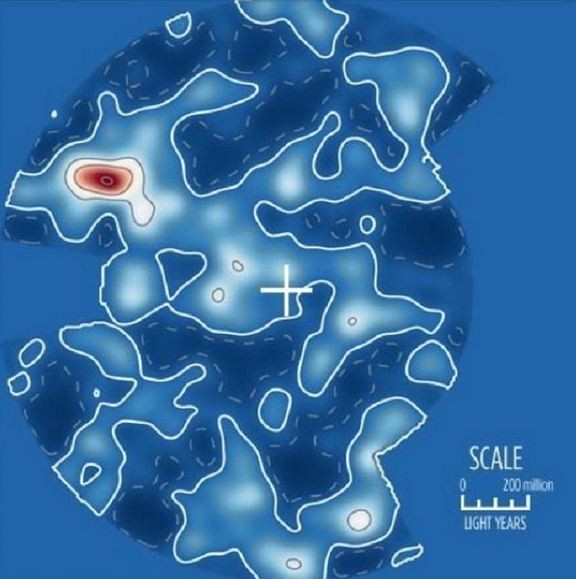The most thorough 3D map of the Universe yet created spans nearly two billion light-years and also provides deeper insights into dark matter.
It's the most complete picture of the Universe to date.
The lighter blue and white areas of the new map show great concentrations of galaxies. The red area is a galaxy supercluster called the Shapley Concentration, the largest collection of galaxies in the Universe. Unexplored areas are colored medium blue.
The Milky Way is marked by a cross in the map.
The spherical map of galaxy superclusters will lead to a greater understanding of how matter is distributed in the Universe and provide key insights into dark matter that accounts for 27 percent of the total mass-energy of the Universe.
Knowing the location and motion of matter in the Universe will help astrophysicists predict the Universe's expansion and identify where and how much dark matter exists.
"The galaxy distribution isn't uniform and has no pattern," said Prof. Mike Hudson, one of the researchers at the Department of Physics and Astronomy at the University of Waterloo in Ontario, Canada.
"It has peaks and valleys much like a mountain range. This is what we expect if the large-scale structure originates from quantum fluctuations in the early universe."
Scientists know galaxies move differently because the Universe's expansion is uneven, one of the peculiarities created by the Big Bang. These differences are called "peculiar velocities".
Previous models, however, didn't fully account for this observed motion. Hudson and his team are interested in discovering what structures are responsible for peculiar velocities.
That's why the researchers factored peculiar velocities in the map. These deviations galaxy motion are a valuable tool to determine the distribution of matter and dark matter on the largest scales.
"A better understanding of dark matter is central to understanding the formation of galaxies and the structures they live in, such as galaxy clusters, superclusters and voids," said Hudson.
The research appears in the journal Monthly Notices of the Royal Astronomical Society.



























